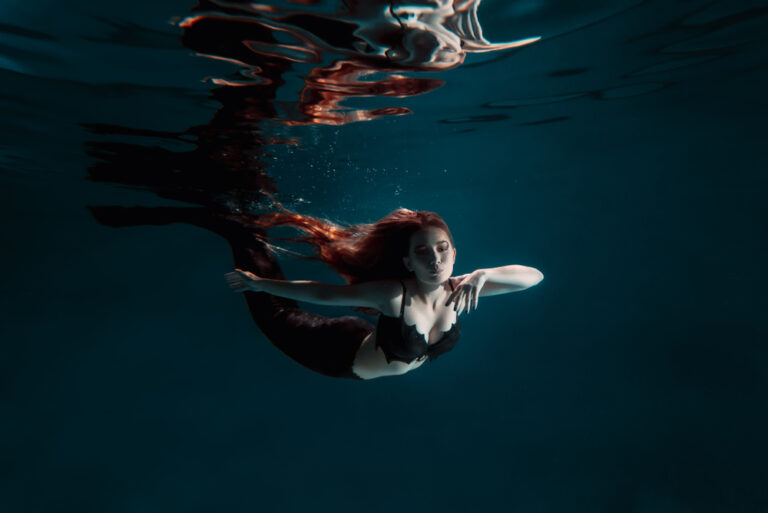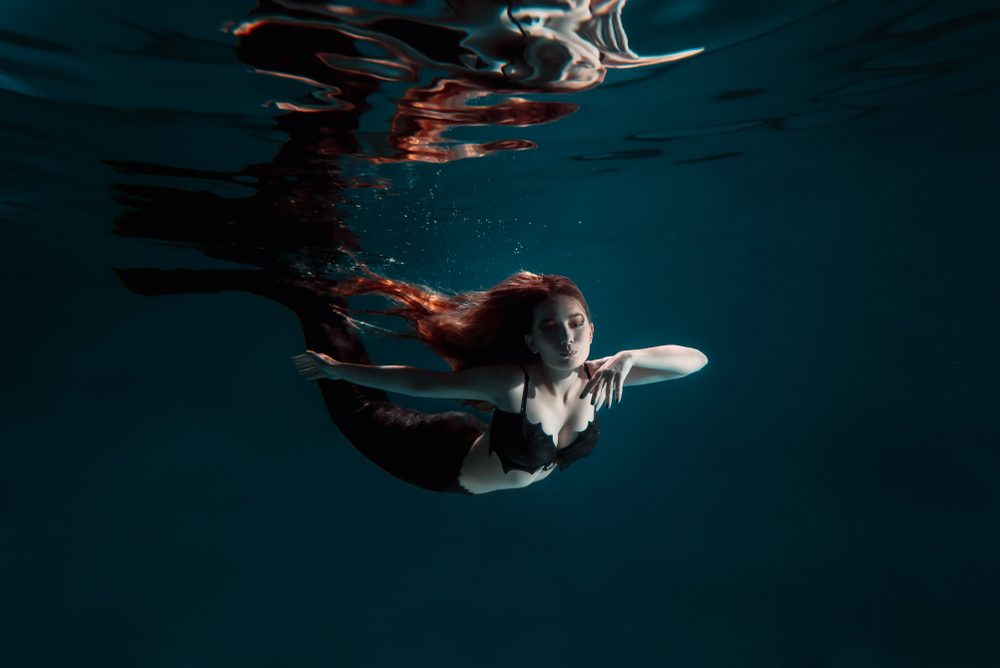
[ad_1]

Whether you grew up with Hans Christan Anderson fairy tales or watched Peter Pan, Pirates of the Caribbean and Harry Potter, you’ve probably heard of mermaid legends. There isn’t much evidence, except for speculation, that mermaids existed. However, these legends can be found all over the world.
Some believe that aquatic mammals such as manatees and dugongs inspired mermaid legends. There is even an account from Christopher Columbus saying that members of his crew had spotted “mermaids” — though they were ugly and seemed more masculine than the mermaids in legends.
(Credit:Ivanenko Vladimir/Shutterstock)
But a recent study published in the journal Marine Mammal Science suggests the inspiration may have come from a different marine mammal altogether.
Mermaid Legend Origins
Bryde’s whale (mother and child) trap feeding small fish showing whale baleen with many seagulls in sunny day, Gulf of Thailand. (Credit:Bird of Thailand/Shutterstock)
A whale’s unique feeding strategy may be responsible for mermaid witness accounts. Within the last two decades, researchers have witnessed what they call trap feeding among humpback whales in the Northeast Pacific. They also witnessed a similar feeding method in a Bryde’s whale in the Gulf of Thailand called tread-water feeding (though it may be distinct according to the study).
The feeding strategy essentially is when a whale treads water at the surface with its jaws wide open. The whale sits, waiting patiently for the prey to enter its mouth before quickly closing its jaws and trapping its prey.
According to the study, this behavior may have inspired legends of mermaids and krakens as early explorers and anglers sailed the seas.
Read More: The Mysterious Origin of Dragons
Are Mermaids Real?
What is unusual about mermaids is that most ancient cultures worldwide all seemed to develop a mermaid legend with similar themes. Merfolk even appear in ancient Greek mythology, including The Odyssey.
Mermaids almost always appear as half human, half fish (or other aquatic/serpentine animals). More often than not, the human half of the mermaid appears feminine — and is usually beautiful.
Celtic mythologies often discuss such creatures as the ceasg — a creature with the upper body of a woman and the tail of a salmon — and selkie, seal-like creatures who can shed their skin and come ashore.
In legends such as the selkie or the Celtic merrow, if you possess something of the creature, such as their seal skin, you can control them and keep them on land.
(Credit:xochicalco/Getty Images)
Woodcut-style image of a swimming mythical Celtic selkie.
Other European countries have legends such as the Melusine, a figure with the torso and head of a woman and the tail of a serpent — sometimes two tails, like the Starbucks logo.
In these legends, mermaids often sing and their voices tend to lure people, typically sailors, to their deaths. But in some cases, like the Sinjiki, a mermaid in South Korea, they use their voice to warn sailors of bad weather.
While we may know that these mythic creatures were most likely whales or manatees, it’s easy to see how they could have been mistaken for otherwise. Regardless, whatever sailors have witnessed at sea, it is often exaggerated; you know anglers and their stories.
Read More: Robots and Artificial Intelligence Have Ancient Mythology Origins
[ad_2]